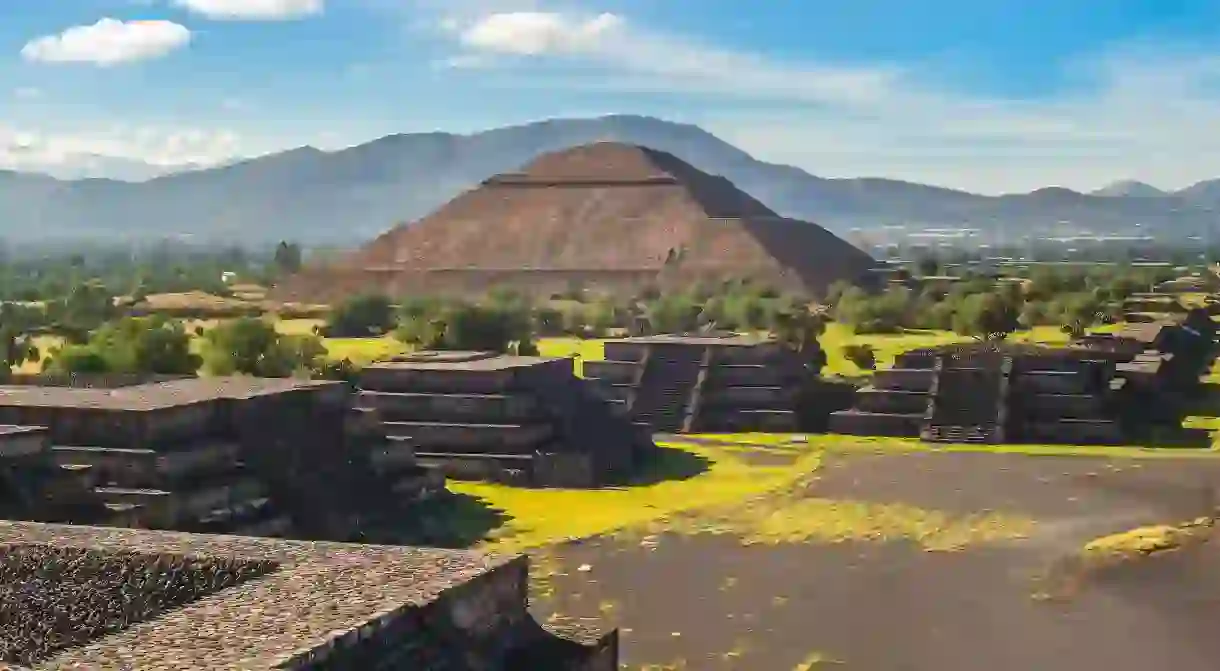The Best Day Trips From Mexico City

While Mexico City may have it all – from museums to art galleries to world-class bars – sometimes you just need to escape the hustle and bustle of the Mexican capital. If you’re feeling a little restless, there are plenty of fascinating sites and cities that offer refreshing day trips from Mexico City. Here is our guide to the best.
Teotihuacán, State of Mexico
Historical Landmark, Archaeological site, Ruins
About a 45-minute bus journey from the city center is one of the most famous archaeological landmarks in Mexico: the ancient city of Teotihuacán. While technically no longer a city, this is still easily one of the best day trips to take from Mexico City. Located in the State of Mexico, the pyramids and ruins that remain from this Mesoamerican settlement are truly magnificent. The Pyramids of the Sun and of the Moon can both be climbed, and from them you can take in the full scale of the Unesco World Heritage archaeological site. Plan a trip by booking a place on Culture Trip’s five-day Mexico City tour, which is led by our local insider.
Tepotzotlán, State of Mexico
Architectural Landmark

Toluca, State of Mexico
Historical Landmark

About a 50-minute drive away is the state capital of the Estado de México, Toluca de Lerdo. Second only to Mexico City in quantity of museums, this would make a great day trip for culture hounds who want to know more about the history and art of this country. Some particularly excellent museum options here are the Museo de Bellas Artes, Centro Cultural Mexiquense, and the Cosmovitral Botanical Garden, the later of which has stunning stained glass murals. Toluca is also famed for being the chorizo-producing hub of Mexico, so take the opportunity to try some while you’re there.
Cuernavaca, Morelos
Architectural Landmark
About an hour’s drive from the city center is Cuernavaca, the state capital of Morelos. Full of royal residences, churches and museums, Cuernavaca is a sleepy town known for an abundance of Spanish-language schools. Check out La Casa del Olvido (or Olindo), which housed Emperor Maximilian in 1866 during his attempts to forget his wife Carlota, or visit the nearby Las Estacas, home to the Bahidorá Festival. Now known as the land of eternal spring, Cuernavaca has numerous sights that will delight any visitor.
Pachuca, Hidalgo
Architectural Landmark

About an hour’s drive from Mexico City, or double that time if you take the bus, is the state capital of Hidalgo, Pachuca. Nicknamed la bella airosa for its windy climate, Pachuca has sights that are generally mining related, given that it was once a hive of mining activity. This mining city therefore has connections with Cornwall in the United Kingdom, and is also the birthplace of the Mexican paste (pasty), which developed from the Cornish pasty. But the British connection doesn’t end there – the emblematic reloj monumental was built by the same company responsible for Big Ben.
Tlaxcala, Tlaxcala
Architectural Landmark
About an hour and a quarter’s drive, but longer if you take the bus, is another state capital. This time it’s Tlaxcala in…well, Tlaxcala. the smallest state in Mexico. Tlaxcala – also the smallest state capital – is an underrated day trip option, with lots to offer visitors. The majority of the tourist attractions here are pre-Hispanic in nature, so this is the perfect destination for the historically minded or archaeologically intrigued. Xochitécatl, southwest of Tlaxcala City, and Cacaxtla, on the southern border of the state, are perhaps the two best known archaeological ruins.
Cholula, Puebla
Architectural Landmark, Historical Landmark, Archaeological site

About an hour and a half away from Mexico City is Cholula. This sleepy town in Puebla offers the most outstanding views of the hard-to-pronounce mountains Popocatépetl and Iztaccihuatl. One of most important colonial towns in Mexico, Cholula has colorful architecture and is dominated by churches. In fact, there are more than 40 – incredible, considering the size of this once-great city. One of the biggest archaeological draws of Cholula is that it is home to the largest pyramid in the world – not by height but by volume – pyramid Tepanapa.
Puebla, Puebla
Architectural Landmark
About a two-hour drive from Mexico City, in the state of Puebla, is the capital of the same name. One of top colonial cities in Mexico, it is also one of the most attractive and attracts thousands of day trippers every year from the capital. The fourth largest metropolitan area in Mexico and a buzzing, vibrant university town, Puebla is historic, yet has a modern appeal. One of the most enchanting landmarks in Puebla is the Ex-Hacienda de Chautla. This striking English castle is set in the middle of a lake and even hosts weddings.
Santiago de Querétaro, Querétaro
Architectural Landmark
About two-and-a-half hours outside of Mexico City is the state capital of Querétaro, Santiago de Querétaro, known more commonly as Querétaro. Not only is the historic center here recognized by Unesco, it is widely considered one of the safest cities in Mexico and has gorgeous colonial architecture and vibrant buildings. With a wide selection of museums, churches and former convents to explore, it’s the perfect, peaceful day trip. Plus, if architecture isn’t your thing, keep in mind that Querétaro also has a burgeoning vineyard culture and cultivates excellent wines.
Taxco, Guerrero
Natural Feature, Architectural Landmark

About four hours from the capital is the city of Taxco, just over the border in Guerrero state. Widely recognized for its silver mining industry, some of the best silver products still originate and can be found in Taxco, but keep an eye out for marked-up cheap silver, which isn’t worth purchasing. One of Mexico’s pueblos mágicos, Taxco also has an intriguing cityscape: narrow, winding streets crawl through the city and offer vistas over the red-tiled roofs below. Santa Prisca church is arguably the most iconic building in Taxco.













